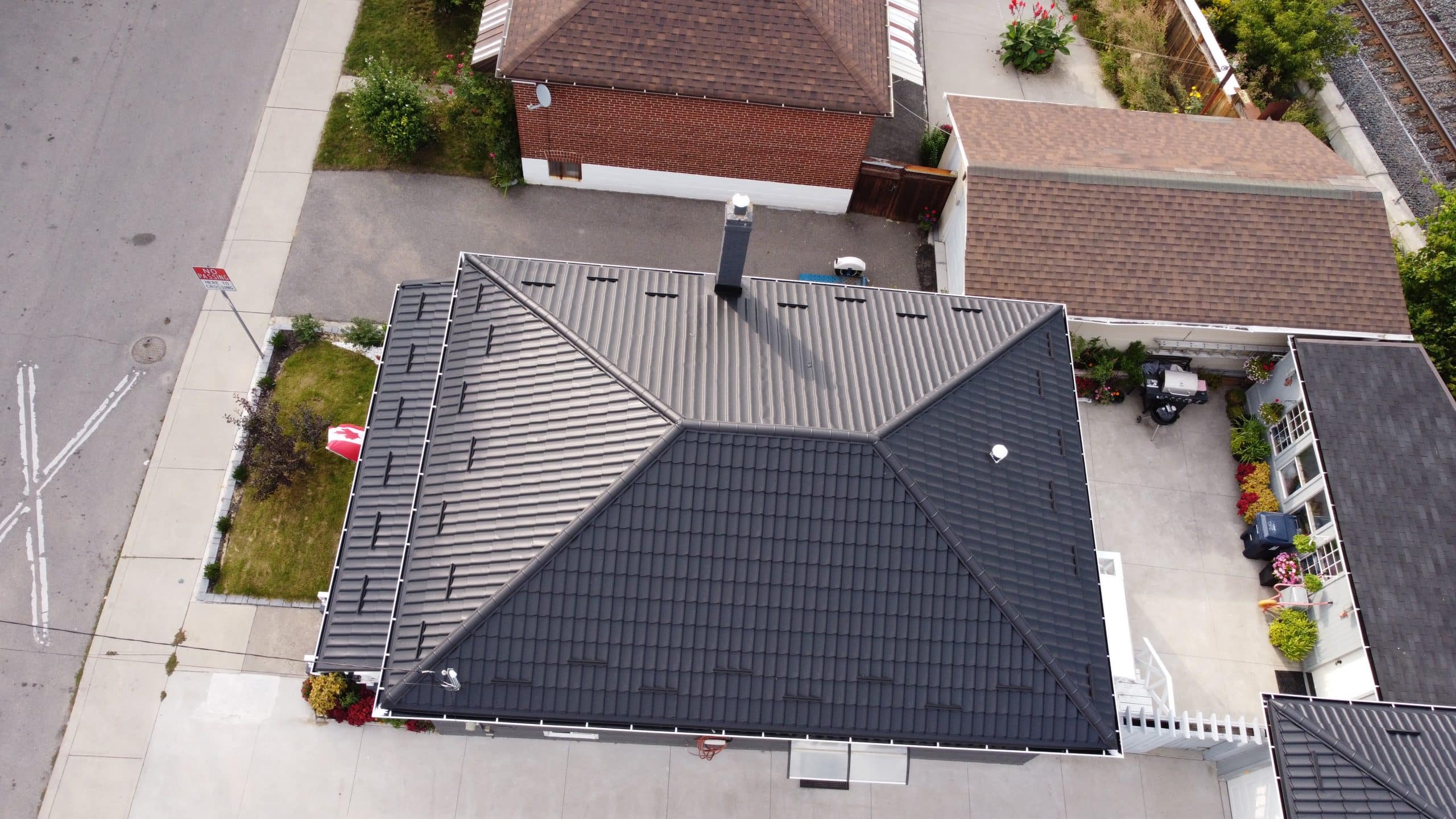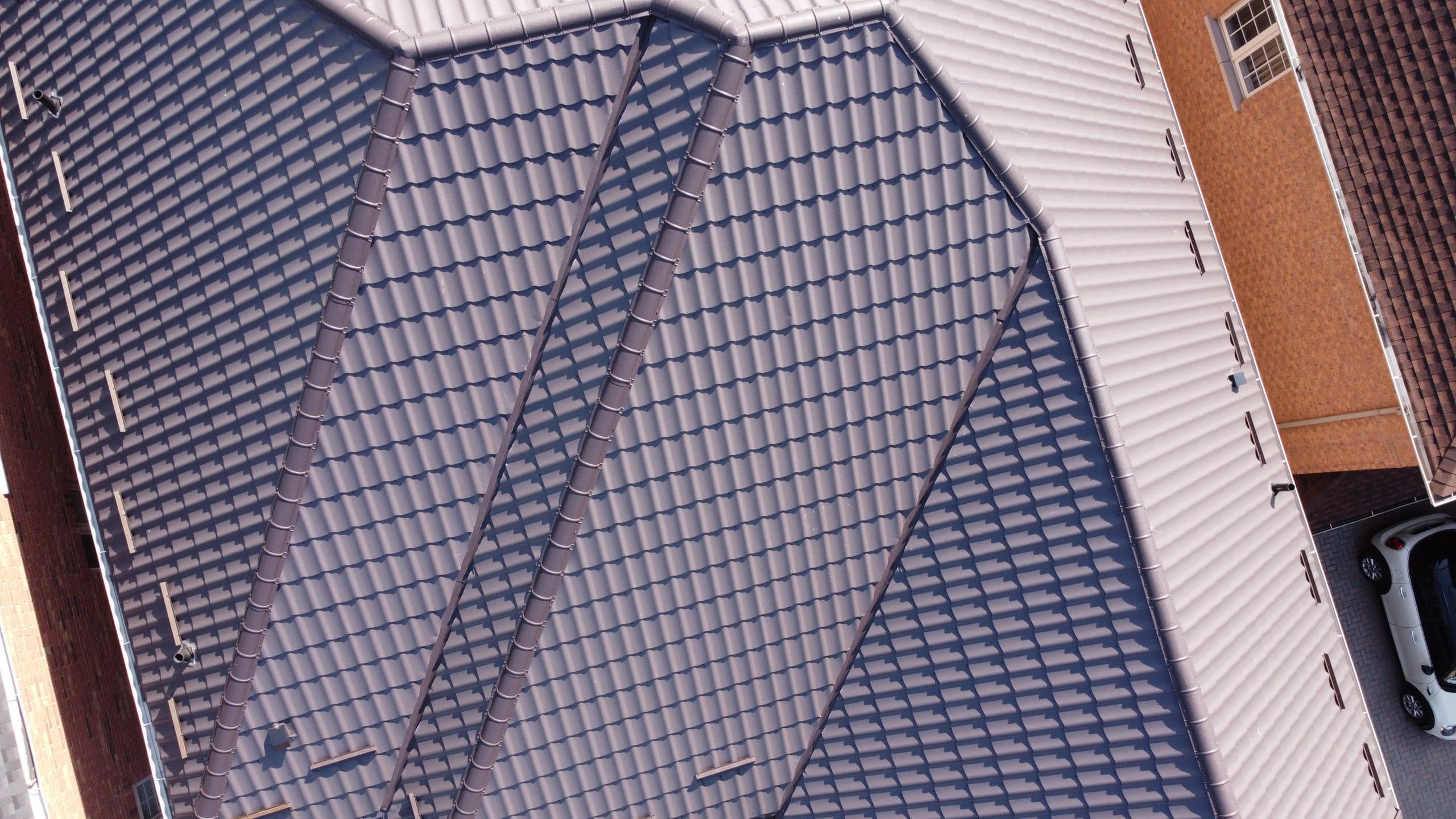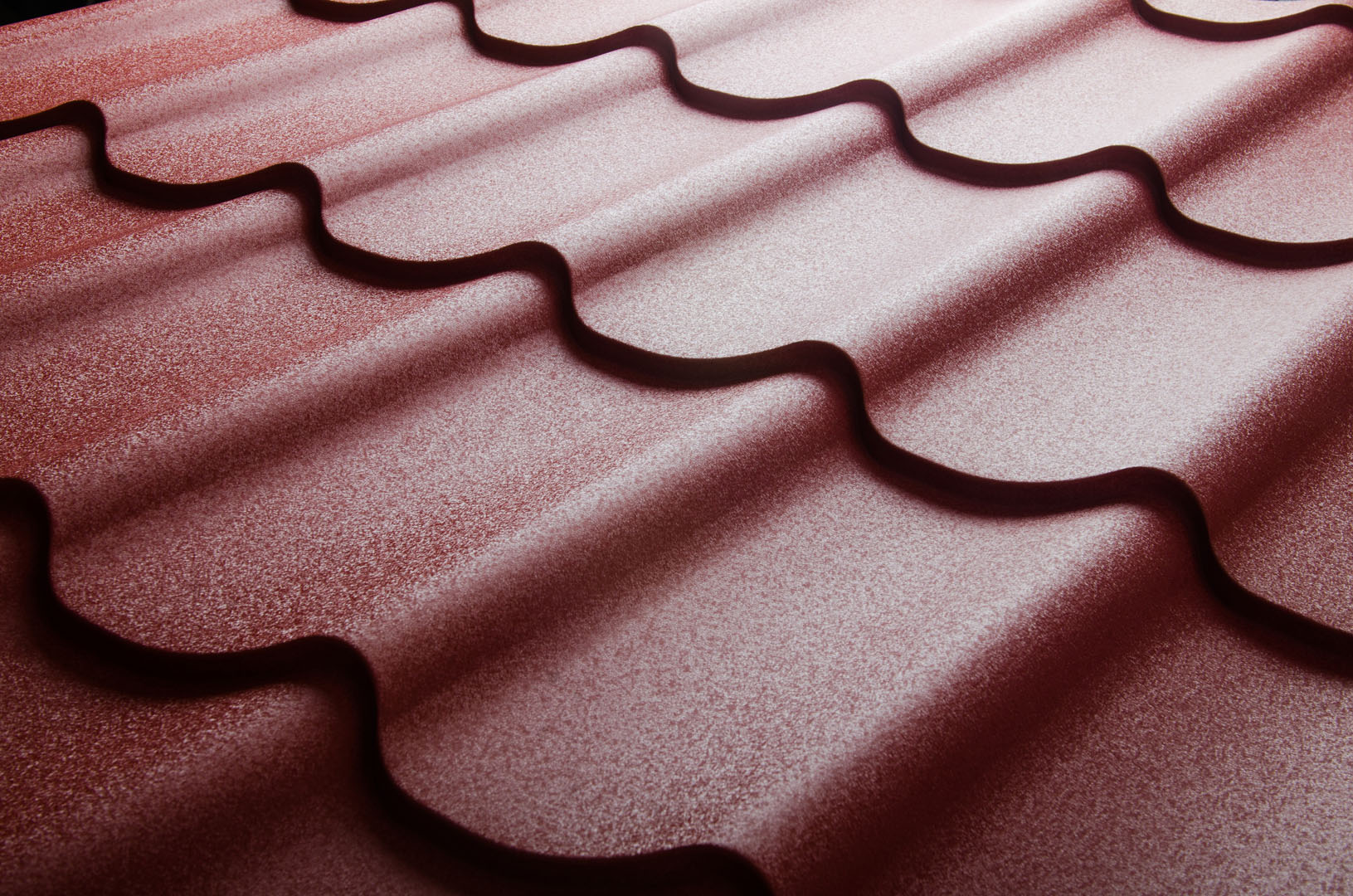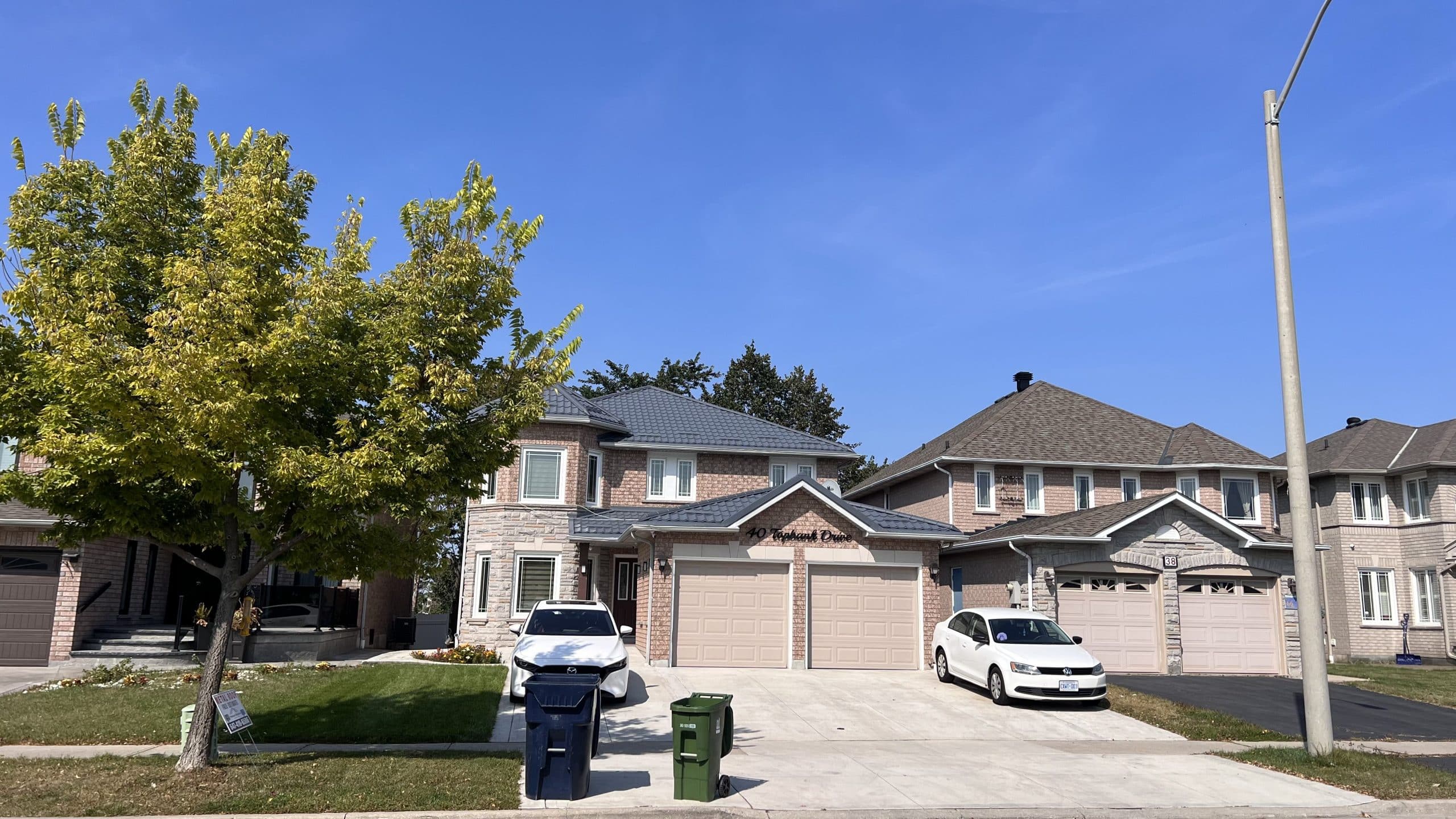Top Metal Roofing Materials for 2026: Choosing the Best Metal Roof for Canadian Home

Choosing the right metal roofing material is more than a simple upgrade — it’s a long-term commitment to your home’s safety, appearance, and durability. In Ontario’s changing climate, with intense heat waves, heavy rains, and winter storms, selecting the proper metal for roofing is essential. Whether you’re comparing aluminum roof panels, galvanized steel roofing material, or traditional tin roof material, each option offers unique benefits. For a deeper look at the advantages and drawbacks, you can also explore our full guide on the pros and cons of metal roofs.
Did you know that certain metal roofs can last over 100 years? This incredible durability is one of the reasons roofing metal sheets have been used for centuries — from historic structures to modern homes across Canada.
Overview of Metal Roofing Materials
Choosing the right metal for roofing starts with understanding the unique characteristics of each option. Below is a simplified, modern overview of the most common types of metal roofs used across Ontario and Alberta — including aluminum, galvanized steel, copper, tin-coated steel, and zinc. Each material offers distinct benefits depending on climate, design, and budget.
Aluminum
Aluminum is one of the lightest and most corrosion-resistant metal roofing materials, making it an ideal choice for homes exposed to moisture or high temperatures. This non-ferrous metal doesn’t rust, reflects sunlight effectively, and performs exceptionally well in hot summers.
Once popular in early 20th-century construction, aluminum remains a top eco-friendly choice today — it is fully recyclable, lightweight, and ideal for structures that cannot support heavier roofs.
Best for: humid climates, energy-efficient homes, coastal or lakeside regions.
Galvanized Steel
Galvanized steel is one of the most durable and affordable metal roof materials. Its zinc coating protects against corrosion and dents, giving it a long lifespan even in harsh weather. Steel has been galvanized for over a century, proving its effectiveness.
Today, galvanized steel remains the most common option for both residential and commercial roofing. It offers an excellent balance of strength, price, and versatility.
- For example, galvanized Steel from Metal Exterior Products we use for commercial buildings and houses that are looking for a more durable roofing solution.
Best for: snowy regions, high-wind areas, modern and traditional home designs.
Copper
Copper is a premium metal roofing material known for its natural patina — a protective layer that develops over time. This patina provides both beauty and corrosion resistance, allowing copper roofs to last well over 100 years.
Historically used in architecture worldwide, copper remains popular for high-end residential projects and buildings seeking a distinctive design.
Best for: luxury homes, architectural projects, long-term durability.
Tin Roof Material (Terne-Coated Steel)
“Tin roofs” today refer to terne steel — steel coated in a tin alloy. This material offers good corrosion resistance at a lower price point.
While traditional tin was widely used in the 19th century, modern tin-coated steel is mostly chosen for heritage restorations or projects needing a vintage aesthetic.
Best for: historical homes, rustic designs, restoration work.
Zinc Roofing
- Zinc stands out for its sustainability and ability to self-heal small scratches through natural patina.
- Highly resistant to corrosion and deformation, zinc has been a popular roofing material in Europe for centuries and is now gaining traction in North America.
Best for: eco-friendly construction, architectural projects, and long-term low maintenance.
Which Metal Roofing Material Is Right for You?
Each option — aluminum, galvanized steel, copper, zinc, or tin roof material — offers unique advantages. Your ideal choice depends on:
climate conditions
architectural style
required lifespan
structural load
maintenance expectations
overall budget
Understanding the differences between these types of metal roofing materials helps Ontario and Alberta homeowners make informed decisions that align with performance, longevity, and design needs.

Comparative Analysis of Metal Roofing Materials
Installing a metal roof in Toronto and the GTA is a smart investment — but different types of metal roofs perform differently when it comes to weight, longevity, cost, and corrosion resistance. Below is a simplified comparison of the most common metal roofing materials used in residential and commercial applications.
Weight Comparison of Metal Roofing Materials
Aluminium: Aluminum is the lightest metal for roofing, making it perfect for homes that cannot support heavy load-bearing materials. Its low weight reduces structural reinforcement costs and makes installation easier.
Galvanized Steel / Roofing Steel: Steel offers an ideal balance of strength and weight. Galvanized steel remains one of the most popular steel roofing material options because it is durable without being overly heavy. Suitable for both residential and commercial roofs.
Copper is slightly heavier than aluminum but lighter than some steel systems. Its weight contributes to long-term stability without significant structural impact.
Tin (Terne-Coated Steel): Modern tin roof material weighs similarly to galvanized steel. Tin-plated steel is rarely used alone but works well for restoration projects requiring lightweight, durable metal roof sheets.
Zinc has a comparable weight to copper, offering stability with moderate structural load. Suitable for homes able to support mid-range-weight roofing metal sheets.
Metal Roofing Materials Longevity
Aluminum: High-quality aluminum roofs — including aluminum roof panels and mixed-metal systems — can last 50+ years, especially in coastal or high-moisture environments.
Zinc-coated steel (galvanized): Depending on coating thickness, galvanized steel roofs last 45–75 years. The zinc layer provides strong protection, making it one of the most reliable types of metal roofing materials.
Copper is one of the longest-lasting roofing metals, often exceeding 100 years. Many historical buildings still have their original copper roofs, proving its exceptional longevity.
Tin: While true tin isn’t used anymore, modern tin-coated steel roofs typically last 40–50 years with proper coatings.
Zinc: Zinc offers impressive durability — 60–100 years — thanks to its self-healing patina. Zinc is one of the only roofing metals capable of repairing small scratches and micro-damage naturally.

Metal Roofing Materials Cost Comparison
Understanding the cost differences between popular types of metal roofs helps homeowners choose a long-term, budget-friendly solution. Below — an updated 2026 comparison of the most common metal roofing materials used across Ontario and Alberta.
Aluminum: Aluminum is slightly more expensive than steel but remains cost-effective thanks to its long lifespan and minimal maintenance needs.
Average cost: $9.50 – $12.00 per sq. ft.
Ideal for: coastal or humid areas, lightweight structures.
Galvanized Steel: Galvanized steel is one of the most popular and affordable metal for roofing options in the GTA. Homeowners choose it for its durability, low installation cost, and reduced long-term maintenance. It also helps lower energy bills and increases home resale value.
Average cost: $4.50 – $20.00 per sq. ft.
Best practical solution for most residential and commercial roofs.
Copper: Copper is the premium, high-end choice among all types of metal roofing materials. Its unmatched aesthetic appeal and ability to last over a century make it one of the most valuable roofing metals available.
Average cost: $30 – $40.00 per sq. ft.
Tin: Modern tin-plated steel is moderately priced and less common today but still chosen for restoration projects and heritage homes.
Average cost: mid-range depending on coating quality.
Zinc: Zinc is more expensive upfront but offers significant long-term savings thanks to extremely low maintenance and a lifespan of up to 100 years.
Average cost: $20 – $30.00 per sq. ft.
Corrosion Resistance of Metal Roofing Materials
Corrosion protection plays a major role in the lifespan of roofing metal sheets. Here’s how each material performs:
Aluminium: Highly resistant to rust and salt corrosion — excellent for homes in high-moisture or coastal environments.
Galvanized Steel: The zinc coating protects the steel core from rust.
At Professional Metal Roofing, we use G90 zinc-coated steel (0.53 mm / 25-gauge) — offering decades of corrosion protection even in harsh climates.
Copper: Naturally corrosion-resistant. With time, copper develops a protective patina that enhances its durability.
Tin: Tin-coated steel resists corrosion similarly to galvanized steel — its longevity depends on the strength and quality of the outer coating.
Zinc: One of the most corrosion-resistant types of metal roofing — performs exceptionally well even in industrial or chemical environments.

Advanced Coatings and Treatments for Metal Roofing Materials
Modern metal roofing materials can be enhanced with advanced coatings that significantly extend lifespan, improve corrosion resistance, and boost aesthetic appeal. These treatments are widely used across Ontario to strengthen steel roofing material, aluminum systems, zinc panels, and other popular types of metal roofs. Below is an updated overview of the most effective coating technologies for 2026.
Galvanization of metal roofing materials
Ideal for steel roofing panels & metal roof sheets.
Galvanization is one of the most reliable treatments for protecting roofing metal sheets from corrosion. During this process, steel is dipped into molten zinc, creating a durable barrier that prevents rust. Zinc coating also acts as a sacrificial anode, meaning it naturally protects exposed areas if the surface is scratched.
Benefits:
✔ excellent corrosion resistance.
✔ budget-friendly protection.
✔ ideal for residential & commercial steel roofing systems.
This remains one of the most common treatments used for galvanized steel roofing material in Canada.
Powder Coating
Great for finishing aluminum roof panels & steel metal roofs.
Powder coating involves spraying electrostatically charged powder that melts into a thick, protective finish. It is far more durable than regular paint and resists fading, chipping, and scratching — ideal for high-UV and high-wind environments.
Advantages:
✔ A wide range of colours.
✔ strong UV resistance.
✔ environmentally friendly (low/zero VOCs).
Anodizing (Mainly for Aluminum)
Perfect for aluminum roof panels & aluminum roofing systems
Anodizing strengthens the natural oxide layer on aluminum, improving corrosion resistance and enhancing durability. It also provides a sleek, modern look without compromising structural integrity.
Benefits:
✔ excellent corrosion resistance.
✔ long-lasting colour finish.
✔ ideal for contemporary or coastal homes.
Epoxy Coatings
Used on steel metal roof systems in industrial settings
Epoxy coatings form a hard, waterproof surface that protects metal from chemicals, pollution, and moisture. They’re frequently used in industrial and manufacturing zones.
Advantages:
✔ strong chemical resistance.
✔ prevents moisture-related rust.
✔ ideal for harsh industrial environments.
Chromate Coatings
Used as a protective primer for aluminum and steel
Chromate conversion coatings improve corrosion resistance and help paint or finishing layers adhere better. This treatment is often used for metal roof sheet systems installed in extreme climates.
Benefits:
✔ maximum corrosion protection.
✔ excellent primer for paint.
✔ ideal for harsh or chemical-heavy environments.
Why Coatings Matter for Metal Roofing in 2026
Advanced coatings dramatically improve the performance, longevity, and appearance of modern types of metal roofs. Though they add to the initial material cost, they:
extend roof lifespan.
reduce long-term maintenance.
improve protection in extreme climates.
enhance curb appeal.
For homeowners in Ontario and Alberta, choosing coated metal roofing materials ensures better performance in both summer heat and winter storms.

Suitability of Metal Roofing Materials for Different Environments
When choosing a metal roof in Toronto, Hamilton, or anywhere in the GTA and Alberta, it’s essential to consider local environmental conditions. Different types of metal roofing materials respond uniquely to salt exposure, industrial pollutants, snowfall, and high UV levels. Below is a concise, updated guide to which materials perform best in each environment.
Coastal Areas (High Salt Exposure)
Best materials for lakeside homes: aluminum, copper, zinc.
Aluminum
Aluminum is the most corrosion-resistant option for coastal regions. Its natural oxide layer protects it from salt damage — making aluminum roof panels ideal for homes near Lake Ontario.
Copper
Copper performs extremely well in coastal air. Over time, it forms a green patina that enhances both durability and aesthetics.
Zinc
Zinc naturally resists corrosion and can self-heal minor scratches, making it suitable for humid and salty environments.
Galvanized Steel
Galvanized steel roofing material can be used, but if the zinc coating is damaged, corrosion risk increases faster in salty environments compared to aluminum or copper.
Tin-Plated Steel (Tin Roof Material)
Works in coastal areas but requires more maintenance and additional coatings to match the durability of aluminum and copper.
Industrial Areas (Pollution & Chemical Exposure)
Best materials for industrial zones: zinc, copper, galvanized steel.
Zinc
Zinc excels in areas with chemical pollutants and heavy air contamination. Its natural protective layer offers high resistance to industrial chemicals.
Galvanized Steel
Zinc coating helps steel resist chemical exposure, though damage to the coating may still allow corrosion.
Copper
Copper is naturally resistant to pollution and chemicals, making it a good long-term choice for industrial environments.
Aluminum
Resists corrosion well but should be anodized or powder-coated for maximum durability in high-pollution zones.
Tin-Plated Steel
Less durable in industrial areas due to its thinner protective layer — requires frequent maintenance.
Heavy Snowfall Areas (Alberta and Ontario)
Best materials: G90 galvanized steel, zinc, copper, and aluminum.
G90 Galvanized Steel
One of the strongest options for snow-heavy regions. It supports significant weight, resists bending, and performs exceptionally well in extreme Canadian winters.
Copper
Copper withstands heavy loads and naturally sheds snow due to its smooth surface.
Zinc
Zinc is durable under heavy snow and can self-heal minor ice damage through patination.
Aluminum
Lightweight and strong, but some roofs may need added structural support during extreme snow seasons.
Tin-Plated Steel
A functional option if installed with proper bracing, though less durable than zinc or steel.
High UV Exposure Regions
Best materials: aluminum, copper, zinc, coated galvanized steel.
Copper
Highly resistant to UV degradation — the sun accelerates patina formation, enhancing protection.
Zinc
UV-resistant and weatherproof; patina helps shield the roof from further exposure.
Aluminum
Reflects sunlight effectively, reducing indoor temperatures and improving energy efficiency.
Coated Galvanized Steel
Protected from UV when coated with premium finishes (e.g., powder-coated systems), but may degrade if coatings are damaged.
Tin-Plated Steel
Least UV-resistant among metal materials; not recommended for high-UV environments without additional protection.
Summary
Selecting the right metal roofing materials requires understanding your environment — coastal salt, industrial pollution, heavy snow, and intense UV levels all influence performance. Each material offers unique strengths:
Aluminum → best for humidity & coastal regions
Galvanized steel → best for snow & general residential roofing
Copper → best for longevity & architectural aesthetics
Zinc → best for pollution-heavy or coastal environments
Tin-plated steel → best for restorations, requires more care
Identifying the correct metal for roofing ensures maximum durability, efficiency, and long-term protection for your home in the GTA.

Conclusion
Choosing the right metal roofing material is one of the most important steps toward ensuring your home stays safe, energy-efficient, and visually appealing for decades. With Ontario’s diverse climate — from hot lakefront summers to intense winter snowstorms — selecting the proper metal for roofing directly affects longevity, performance, and overall value.
Whether you choose aluminum roof panels, galvanized steel roofing material, zinc, copper, or tin roof material, each option provides unique benefits tailored to different environments and architectural needs. Modern protective technologies — including galvanization, powder coating, anodizing, epoxy, and chromate coatings — further enhance durability, corrosion resistance, and curb appeal.
If you’re building a new home, replacing an aging roof, or comparing types of metal roofs, making an informed choice today can prevent costly repairs in the future. And you don’t need to navigate the options alone.
Professional Metal Roofing is Ontario’s trusted specialist for high-quality metal roofing materials near me, expert installation, and long-lasting solutions designed for Canadian weather. We consider your home’s style, your environment, and your budget to help you select the most durable and efficient system.
📞 Call: 647 619 7662
🌐 Website: https://professionalmetalroofing.ca/
Book your free appointment today. Our team will guide you from selecting the right material to completing a flawless installation — giving your home a beautiful, long-lasting roof built to protect for decades.
See our works
Giving you a sense of what a metal roof will look like in your home of commercial property





